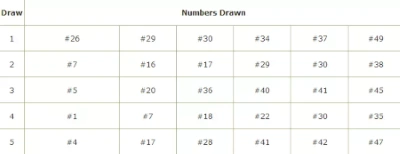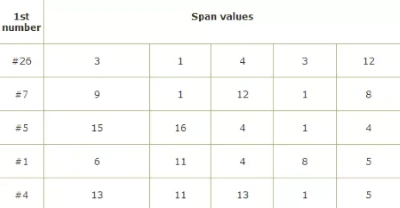
Lottery Number Reduction
Strategy !
Who does not dream to be the winner of the biggest lottery jackpots? Whether it's super enalotto, euromillions, powerball, mega million or irish lottery, one thing is true - playing the lottery without basing your number selection on a strategy is very much like randomly shooting in the forest at night and hoping the prey will get in the range of your rifle. However, one should not get the idea that a certain lottery strategy constitutes a surefire method of winning. To continue on this train hunting metaphor, strategies are your night vision goggles or the scope of your rifle: they make it easier for you to hit the target, but they don't bag you the deer. This of course, is based on the idea that the efficiency number selection method utilized is tested and proven true.
What exactly is Lottery number reduction?
Lottery number reduction is not based on a new mathematical principle, but it has only recently been introduced to the lottery niche as a method to minimize the number of potential outcomes. The core concept of the Lottery number reduction implies determining the numbers that will be drawn based on the first number and the span between it and the second drawn number. However, it is easy to understand that in order for this strategy to function optimally, the player would not only have to know exactly what the first number is, but also the span between it and the second, third, fourth, etc. number.
Quick example
For the purpose of understanding, let's assume that you have 15 numbers that can be permuted in 5 of 5 combinations. Based on this hypothesis, you have exactly 3003 possible permutations, considering that they are arranged in incremental order. To determine the maximum number of permutations, you would have to rearrange each 5 number sequence in every potential order and then multiply the resulting number of permutations by 3003. That would not only be an extremely difficult and tedious job, but it is also not lucrative in any way.
But let's examine the following table of values resulted from 5 draws:

From the first glance, it's rather difficult to notice any pattern between these numbers, right? They all seem to be drawn in a completely random order. But what we need to do is examine the span between the number with the lowest value in the series and the rest of the numbers, which will be depicted in the following table.
back to the MENU


In order to select the first number and apply the span rule, there is no need to go for values that exceed 15 because their probability is rather low.
How should you play it?
From the mathematical point of view, the average number by position comprises of a 7, 14, 21.etc. series, but that is only in theory and playing these values exclusive is highly unlikely to land you a jackpot. Instead, what you will want to do is analyze the reports and determine the most frequent spans. Based on their value and the first numbers within the 1-15 frame that you have selected, you can proceed to making bets. However, keep in mind that trends have a limited life and it is inadvisable to bet on spans that have been drawn more than a couple of times in a row. Instead, aim for frequent spans that have not occurred within the last draws.
Do you want to win millions by participating from one of the leading US lotteries? Don't wait any longer! Play at one of the biggest interstate lotteries organized by the Multi-State Lottery Association: POWERBALL! Every Wednesday and Saturday at 10:59 PM- Eastern time- fascinating jackpots can be yours. Powerball offers various prizes that are given out depending on the amount of numbers you get right. The probability of winning any prize at Powerbal is 1 in 35! Are you going to miss it? Be part of one of the most attractive lotteries shared by 32 states: Arizona, Colorado, Connecticut, Delaware, the district of Columbia, Florida, Idaho, Indiana, Iowa, Kansas, Kentucky, Louisiana, Maine, Minnesota, Missouri, Montana, Nebraska, New Hampshire, New Mexico, North Carolina, North Dakota, Oklahoma, Oregon, Pennsylvania, Rhode Island, South Carolina, South Dakota, Tennessee, US Virgin Islands, Vermont, West Virginia, Wisconsin!
back to the MENU

© Copyright2000
Contact
Disclaimer- Privacy